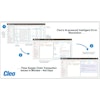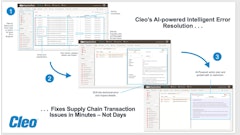
There are many reasons why software vendors choose to sunset a product. In some cases, it no longer makes financial sense to continue updating or selling a particular solution, as the tech landscape has moved on. In others, vendors simply want a clean slate – to modernize and renew a product from the ground up. Often, a merger or acquisition is the backdrop to such a decision.
For chief procurement officers (CPOs), dealing with an occasional product sunset is inevitable. But that doesn’t mean it isn’t a headache too.
The following are five tips for CPOs seeking to minimize the disruption associated with a product sunset and turn this inconvenience into an opportunity:
1. Move quickly
Sometimes rumors of a product sunset start to spread long before a software vendor makes the official announcement. CPOs should try and stay abreast of these and move quickly if it seems like an official announcement is imminent. When a widely used solution is officially discontinued, there’s often a rush of companies looking to procure an alternative, which impacts pricing and the level of onboarding support available. Getting ahead of the crowd can pay dividends.
When a product sunset is announced, software vendors typically offer a generous timeline for when they’ll stop providing updates and patches. This can lull companies into a false sense of security. For instance, some will only start the process of procuring an alternative solution 18 months into a two-year timeline. This last-minute approach often means companies continue to run annulled software for months past its sunset date. This is extremely risky and should be avoided at all costs, as any new security vulnerabilities won’t be patched, and there won't be support available if something goes wrong. CPOs should ensure they leave plenty of time to find an alternative.
2. Build a business case
For CPOs, a lack of budget can be a significant challenge when managing a product sunset. Currently, most software is procured “as-a-service,” with monthly, quarterly or even yearly payments treated as operational expenditure. However, finding and integrating a new software solution requires additional capital expenditure. If the new solution doesn’t offer any additional benefits, it’s often seen as ‘money for nothing’ by other decision-makers.
The answer? Don’t think about the tech first. Instead, CPOs should take note of software users’ pain points and suggestions. They can then map these against wider business goals, which will likely have changed since the current software solution was procured. Using this information, companies can select a new solution that delivers additional benefits or solves existing problems. By building a robust business case and demonstrating added value, it’s easier for CPOs to gain the buy-in of other decision-makers and get the project off the ground.
3. Opt for intelligent, composable architecture
We’re currently seeing more businesses turn to composable architecture and “headless” technologies. In a nutshell, a composable architecture enables companies to use individual, reusable components to build software applications that fit their exact needs. Essentially, instead of buying the building, they’re buying the bricks.
Instead of buying a full suite of capabilities from one vendor, a composable architecture enables companies to build different features that fit their exact needs, while still buying stable business capabilities from multiple vendors to assemble a best-in-breed solution. It is a new paradigm that allows the best of both worlds - build and buy - to be leveraged alongside one another for optimal business results. It’s inherently flexible and can be readjusted when goals or requirements change over time.
Opting for a composable architecture also enables companies to expose their core business capabilities through APIs. This ensures that data is dynamic, and updates can happen automatically.
4. Consider your existing technical capabilities and tech stack
Opting for a composable architecture isn’t for everyone. If all a company requires is a simple solution, or if a solution suite that fits the company’s exact requirements already exists, it would likely be overkill. Similarly, if a company lacks the internal capabilities to update and manage a composable architecture, tread lightly. Procuring a solution suite is a much safer option.
If CPOs decide this is the best way forward, they should look closely at the rest of their company’s tech stack and select a solution suite that can integrate as closely as possible. Additionally, to ensure this decision is “future-proof,” CPOs will need to understand the shelf-life of all their software. Do existing platforms still fit current business needs? Are any of them likely to be discontinued soon?
5. To avoid future disruption, closely evaluate prospective vendors
Once CPOs have managed one product sunset, chances are they won’t want to do it again two years down the line. When assessing prospective vendors, CPOs should try to understand their future strategy. Is this software solution currently profitable for them? Does it look like they’re changing focus? Have they recently been acquired, or acquired another company? Often, CPOs make the mistake of picking the largest player, thinking this is a guarantee of a platform’s longevity, but this certainly isn’t the case.
It’s worth mentioning another advantage of composable architecture here. Opting for this approach guarantees a vendor agnostic solution, as each component can be switched out individually if needed. This means CPOs can be certain they won’t have to deal with the operational disruption of yet another product sunset, not to mention the unexpected costs.
Looking for tomorrow’s sunset
Product sunsets are inevitable and given the looming global recession and accelerating pace of digital transformation, we may start to see more of them soon. CPOs should remember that successfully managing a product sunset isn’t simply about trying to minimize instability and disruption. Instead, it’s looking at the sunset as an opportunity to assess, evaluate and implement future-proof technologies into their company’s tech stack.

















